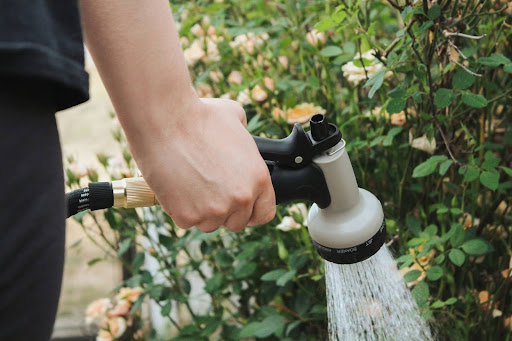Xeriscape landscaping, also known as ‘xeriscaping,’ is a landscape designed specifically for areas vulnerable to drought or where water conservation is practiced or enforced. The word is derived from the Greek word xeros, which means “dry,” and thus the term means “dry landscape.” Simply put, xeriscaping is a form of landscaping that uses a minimal amount of water to thrive. While this type of landscape design is most often employed in arid and hot climates, over time, xeriscaping has become useful in other climates that need to protect vital water sources. In addition, xeriscaping techniques are commonly planned with the same landscape design aesthetics as any other type of landscape garden.
Why Is Xeriscaping Important?
By organizing plants by their water requirements, using mulch, and choosing plants that are tolerant to low water or drought conditions, you will be significantly reducing water usage.
You will also have healthier landscapes and gardens and less need for pesticides and fertilizers. It is important to consider that everything we do in our yards and gardens will eventually impact our water resources and, subsequently, any local bodies of water.
We hear a fair bit about pollution from factories and industry, which are considered “point sources.” Homeowners and individual citizens are considered “nonpoint” sources of pollution.
runoff from all “nonpoint sources” is significant.
What are the Benefits of Xeriscaping?
Apart from saving water, xeriscaping involves one major factor, which is the reduction of lawn grass areas. This is because lawn grass is frequently one of the worst offenders when it comes to water conservation. The benefits of eliminating lawn grass in favour of a low-maintenance xeriscape are:
Saving money on water usage as well as automatic lawn irrigation systems and services
Eliminating the need for chemicals and lawn pesticides that are used to keep a lawn lush
Eliminating concerns about a browning or imperfect lawn
Requiring less time and labour to maintain your outdoor space
While you may not think your use of pesticides and/or fertilizers is excessive, the combined
How Do You Practice Xeriscape Landscaping?
The fundamental principles of xeriscaping are simple and easy to practice with the goal of conserving water. When xeriscaping, it is important to focus on the primary methods and particular principles that will create a successful landscape.
Plan and Design
Creating a water-wise landscape requires significant planning and adherence to the basic xeriscape design principles. Instead of focusing on the aesthetics of your space first, evaluate the degree of sun exposure, topography, and soil. Creating specific planting areas and grouping your plants by their requirements is a good place to start.
Choose Appropriate Plants
The practice of xeriscaping doesn’t have to be limited to native desert plants, for example, cacti and succulents. Xeriscaping can be successful with a wide variety of beautiful plants that naturally conserve water and are drought-tolerant. Using native plants in a xeriscape space is important as they are already adapted to your climate and, as a result, need less water from human supply.
Reduce or Eliminate Lawn Grass
Xeriscapes are typically created without any lawn grass, favoring plantings and ornamental grasses instead. Lawn areas are usually transformed into hardscapes, flower beds, or rock gardens. This is simply because it requires a significant amount of water, fuel, and fertilizer to keep a lawn green and lush.
Improve the Soil
Adequately draining soil is essential to the success of xeriscape landscaping. Poor quality, dry soil lacks nutritious organic matter, meaning it can’t effectively drain or absorb water well. Drought-tolerant plants are not able to thrive in soggy soil and thus can make even drought-tolerant plants vulnerable. Before planting, amend your soil through the incorporation of generous amounts of organic matter and compost to promote water penetration and retention.
Mulch to Retain Moisture
Mulching is a great way to support a water-wise landscape, as it moderates the temperature of the soil, retains moisture, suppresses weeds, and slows erosion. Mulch will also decompose and feed the soil over time. Applying approximately 4 inches of mulch at initial planting and checking it each season to see if it needs to be replenished is the best practice.
Call a Professional
If you are thinking about incorporating the practice of water-efficient xeriscaping into your outdoor space, consulting a professional is often the best first step. At Mountview Services, we are experts when it comes to creating the landscape of your dreams and using xeriscaping techniques. Contact us today for your landscape project or maintenance quote!

